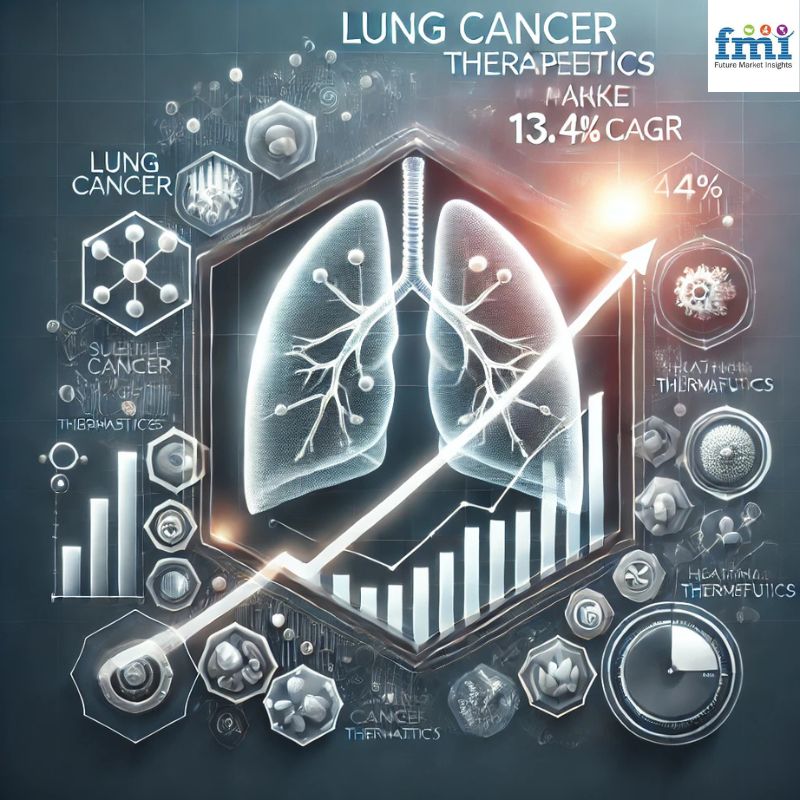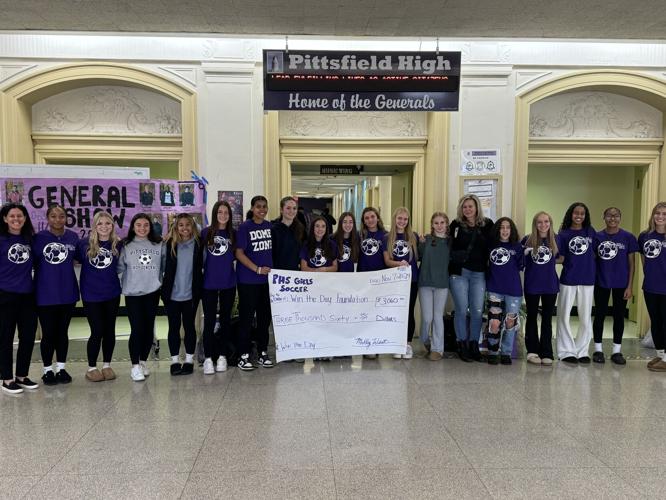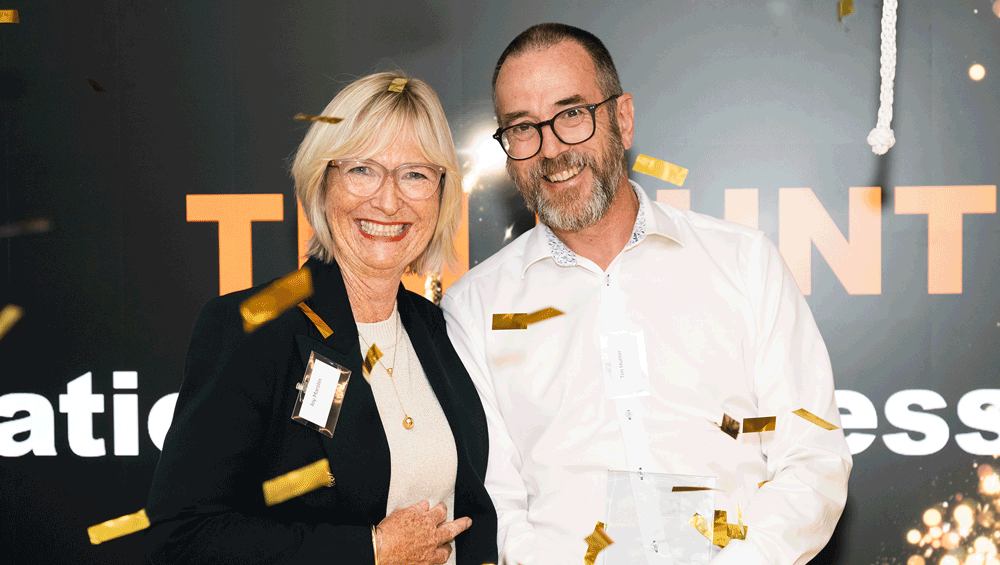
NEWARK, Del, Oct. 27, 2024 (GLOBE NEWSWIRE) -- The global Lung Cancer Therapeutics Market is poised for remarkable growth over the forecast period, 2022 to 2032. The market, which is driven by rising lung cancer incidence rates, advancements in targeted therapies, and increased public awareness about early cancer detection, is expected to grow at a CAGR of 13.
4% during the forecast period. The significant market value is projected to reach USD 48,725.9 million by 2026, with continued expansion beyond this period.
The increasing global prevalence of lung cancer surgery , particularly non-small cell lung cancer (NSCLC), is fueling demand for innovative therapeutics. Pharmaceutical companies are focusing on the development of personalized treatment options, such as immunotherapies and targeted drug therapies, which are enhancing treatment efficacy and improving patient outcomes. This trend is expected to remain a major driver of market growth.
North America currently holds the largest share of the Lung Cancer Therapeutics Market due to robust healthcare infrastructure, high healthcare expenditure, and extensive research and development initiatives. However, Asia-Pacific is anticipated to emerge as a fast-growing region, propelled by rising cancer cases, improved healthcare access, and supportive government initiatives. Additionally, advancements in biomarkers and next-generation sequencing are opening doors to more precise and individualized treatment approaches, further supporting market expansion.
With lung cancer being one of the leading causes of cancer-related deaths worldwide, investment in therapeutic solutions is set to remain a priority for both public and private sectors. Lung cancer remains one of the most prevalent cancers worldwide, prompting heightened efforts from healthcare providers and governments to educate the public on early detection and treatment options. This has resulted in more frequent diagnoses, which, in turn, is expected to boost the demand for lung cancer therapeutics.
In addition to growing awareness, increased investment in research and development by key industry players is further propelling the market forward. The focus on innovative therapeutic solutions and new diagnostic tools has allowed healthcare providers to offer more effective treatments, improving patient outcomes. The rising incidence of lung cancer is pushing pharmaceutical companies to accelerate R&D efforts to develop novel therapies.
“The global lung cancer therapeutics market is poised for significant growth, driven by a combination of increasing lung cancer incidence, advancements in personalized therapies, and an aging population. The introduction of nanomedicine and the surge in regulatory approvals are further bolstering market demand, particularly in Europe,” says Sabyasachi Ghosh (Associate Vice President at Future Market Insights, Inc.) Key Takeaways from Lung Cancer Therapeutics Market Study: The Lung Cancer Therapeutics Market is projected to grow at a CAGR of 13.
4% from 2022 to 2032. Market size is expected to surpass USD 48,725.9 million by 2026 .
North America leads the market, with Asia-Pacific expected to witness rapid growth. Drivers and Opportunities One of the primary drivers of the Lung Cancer Therapeutics Market is the increasing incidence of lung cancer globally, primarily due to tobacco consumption and air pollution. The shift toward advanced therapies, including monoclonal antibodies, kinase inhibitors, and immunotherapies, is also contributing to market growth.
In addition, government initiatives aimed at funding cancer research, coupled with the availability of healthcare insurance schemes that cover high-cost cancer treatments, are providing lucrative opportunities for market players. Emerging economies are seeing increased adoption of lung cancer therapies as healthcare access improves and diagnostic techniques become more prevalent. Who is the biggest vendor of Lung Cancer Therapeutics Market in the world? AstraZeneca currently holds a prominent position in the Lung Cancer Therapeutics Market.
The company's portfolio includes groundbreaking therapies like Tagrisso (osimertinib), which is widely used for treating patients with EGFR-mutated NSCLC. Other key players include Roche, Bristol-Myers Squibb, Pfizer, and Merck & Co., all of which are competing to lead the market through innovations in immunotherapies and targeted treatments.
Market's Prime Determinants of Growth, Trends, and Opportunities The primary drivers of market growth include the rising number of lung cancer cases and the ongoing shift toward precision medicine. The introduction of novel therapeutics, such as checkpoint inhibitors and tyrosine kinase inhibitors, has transformed the treatment landscape. Furthermore, technological advancements in diagnostic tools like liquid biopsy and circulating tumor DNA analysis are enhancing early detection and treatment efficacy.
Emerging trends include the growing use of combination therapies, which are proving to be more effective in managing cancer progression. Opportunities are also expanding in Asia-Pacific, where increasing healthcare access and growing awareness about lung cancer are driving demand for advanced treatments. Growth Drivers Rising Lung Cancer Prevalence: The increasing incidence of both small cell and non-small cell lung cancers is significantly driving market demand.
Technological Advancements: Innovations in cancer diagnostics, such as biomarker analysis and liquid biopsy, are improving early detection and personalized treatment approaches. Government Support: Various global initiatives aimed at cancer research funding and improved healthcare policies are contributing to market growth. Expanding Immunotherapy Usage: Immunotherapy is gaining rapid adoption due to its effectiveness in targeting cancer cells and boosting the immune system’s response.
Regional Analysis North America holds the largest share in the Lung Cancer Therapeutics Market due to advanced healthcare infrastructure and significant investments in cancer research. Asia-Pacific is expected to witness the highest growth rate, driven by rising cancer incidence, improving healthcare access, and growing adoption of advanced therapies. Europe remains a significant market, with robust pharmaceutical R&D and increased patient awareness about cancer treatments.
How is the Competitive Landscape in the Lung Cancer Therapeutics Market? Players are adopting various strategies to expand their product portfolio and increase their geographical presence for demand for lung cancer therapeutics. Some of the key strategies used by players in the global lung cancer therapeutics market include product innovation, partnerships and alliances, and mergers. A Full Report Overview: https://www.
futuremarketinsights.com/reports/lung-cancer-therapeutics-market Key companies profiled 1 AstrazenecaPlc; 2 Sanofi-Aventis.; 3 GlaxoSmitKline; 4 Eli Lilly and Company; 5 BoehringerIngelheim GmbH; 6 Pfizer Inc.
; 7 Hoffman-La Roche Key Segments of Lung Cancer Therapeutics Market By Cancer Cell Type: Small Lung Cancer Non-Small Lung Cancer (NSLC) By Molecule Type: Biologics Small Molecules By Mode of Administration: Injectable Oral By Type: AML CML ALL CLL By Region: North America Latin America Europe Asia Pacific Middle East and Africa(MEA) Author by: Sabyasachi Ghosh (Associate Vice President at Future Market Insights, Inc.) holds over 12 years of experience in the Healthcare, Medical Devices, and Pharmaceutical industries. His curious and analytical nature helped him shape his career as a researcher.
Identifying key challenges faced by clients and devising robust, hypothesis-based solutions to empower them with strategic decision-making capabilities come naturally to him. His primary expertise lies in areas such as Market Entry and Expansion Strategy, Feasibility Studies, Competitive Intelligence, and Strategic Transformation. Holding a degree in Microbiology, Sabyasachi has authored numerous publications and has been cited in journals, including The Journal of mHealth, ITN Online, and Spinal Surgery News.
Have a Look at the Related Report from the Lung Cancer Therapeutics Market: The global Lung Cancer Surgery Market was valued at USD 1.23 Billion in 2021 and is expected to reach USD 1.98 Billion by 2029, finds Future Market Insights (FMI) in a recent market survey.
The leukemia therapeutics treatment market valuation is USD 15,246.7 million in 2023. In 2022, the value was USD 14,504.
8 million. The market is predicted to grow at a healthy CAGR of 7.1% from 2023 to 2033.
The global digital psychotherapeutics market size is projected to be worth USD 1.06 billion in 2023. Over the next ten years, global digital psychotherapeutics demand is likely to accelerate at 27.
6% CAGR. The global sales of wearable healthcare devices market are estimated to be worth USD 19,163.1 million in 2024 and anticipated to reach a value of USD 43,327.
4 million by 2034 The global sales of ultrasound conductivity gels market are estimated to be worth USD 325.9 million in 2024 and anticipated to reach a value of USD 690.7 million by 2034.
The global sales of contrast media injectors market is estimated to be worth USD 4,949 million in 2024 and anticipated to reach a value of USD 8,832.8 million by 2034. The global sales of anaesthesia machines market is estimated to be worth USD 11,126.
0 million in 2024 and anticipated to reach a value of USD 17,780.9 million by 2034. The global sales of dermal fillers market are estimated to be worth USD 6,411.
8 million in 2024 and anticipated to reach a value of USD 8,819.6 million by 2034. The Acetaminophen-Opioid Combination market is estimated to be worth USD 3,144.
1 million in 2024 and is projected to reach a value of USD 4,522.6 million by 2034 The cardiac rehabilitation market is estimated to reach USD 2,343.5 million in 2024.
Revenue is estimated to increase at a CAGR of 4.6% between 2024 and 2034. About Future Market Insights (FMI) Future Market Insights (FMI) is a leading provider of market intelligence and consulting services, serving clients in over 150 countries.
FMI is headquartered in Dubai and has delivery centres in the United Kingdom, the United States, and India. FMI's latest market research reports and industry analysis helps businesses navigate challenges and make critical decisions with confidence and clarity amidst breakneck competition. Our customized and syndicated market research reports deliver actionable insights that drive sustainable growth.
A team of expert-led analysts at FMI continuously tracks emerging trends and events in a broad range of industries to ensure that our clients prepare for the evolving needs of their consumers. Join us as we commemorate 10 years of delivering trusted market insights. Reflecting on a decade of achievements, we continue to lead with integrity, innovation, and expertise.
Contact Us Future Market Insights Inc. Christiana Corporate, 200 Continental Drive, Suite 401, Newark, Delaware - 19713, USA T: +1-347-918-3531 For Sales Enquiries: [email protected] Website: https://www.
futuremarketinsights.com LinkedIn | Twitter | Blogs | YouTube GERMAN Translation - Der globale Markt für Lungenkrebstherapeutika wird im Prognosezeitraum von 2022 bis 2032 ein bemerkenswertes Wachstum verzeichnen. Der Markt, der durch steigende Lungenkrebsinzidenzraten, Fortschritte bei gezielten Therapien und ein erhöhtes öffentliches Bewusstsein für die Früherkennung von Krebs angetrieben wird, wird im Prognosezeitraum voraussichtlich mit einer durchschnittlichen jährlichen Wachstumsrate von 13,4 % wachsen .
Der signifikante Marktwert wird voraussichtlich bis 2026 48.725,9 Millionen USD erreichen und auch über diesen Zeitraum hinaus weiter wachsen. Die weltweit zunehmende Verbreitung von Lungenkrebs, insbesondere des nicht-kleinzelligen Lungenkrebses (NSCLC), treibt die Nachfrage nach innovativen Therapeutika an.
Pharmaunternehmen konzentrieren sich auf die Entwicklung personalisierter Behandlungsoptionen wie Immuntherapien und zielgerichtete Arzneimitteltherapien, die die Wirksamkeit der Behandlung erhöhen und die Behandlungsergebnisse verbessern. Dieser Trend dürfte auch weiterhin ein wichtiger Wachstumstreiber des Marktes bleiben. Nordamerika hält derzeit den größten Anteil am Markt für Lungenkrebstherapeutika aufgrund einer robusten Gesundheitsinfrastruktur, hoher Gesundheitsausgaben und umfangreicher Forschungs- und Entwicklungsinitiativen.
Es wird jedoch erwartet, dass sich der asiatisch-pazifische Raum zu einer schnell wachsenden Region entwickelt, angetrieben durch steigende Krebsfälle, verbesserten Zugang zur Gesundheitsversorgung und unterstützende Regierungsinitiativen. Darüber hinaus eröffnen Fortschritte bei Biomarkern und Next-Generation-Sequencing Möglichkeiten für präzisere und individuellere Behandlungsansätze, was die Marktexpansion weiter unterstützt. Da Lungenkrebs eine der häufigsten krebsbedingten Todesursachen weltweit ist, werden Investitionen in therapeutische Lösungen sowohl im öffentlichen als auch im privaten Sektor weiterhin Priorität haben.
Lungenkrebs ist nach wie vor eine der häufigsten Krebsarten weltweit. Gesundheitsdienstleister und Regierungen bemühen sich daher verstärkt darum, die Öffentlichkeit über Früherkennung und Behandlungsmöglichkeiten aufzuklären. Dies hat zu häufigeren Diagnosen geführt, was wiederum die Nachfrage nach Lungenkrebsmedikamenten steigern dürfte.
Neben dem wachsenden Bewusstsein treiben auch erhöhte Investitionen in Forschung und Entwicklung durch wichtige Akteure der Branche den Markt weiter voran. Der Fokus auf innovative therapeutische Lösungen und neue Diagnoseinstrumente hat es Gesundheitsdienstleistern ermöglicht, wirksamere Behandlungen anzubieten und so die Behandlungsergebnisse der Patienten zu verbessern. Die steigende Zahl von Lungenkrebserkrankungen zwingt Pharmaunternehmen dazu, ihre Forschungs- und Entwicklungsbemühungen zur Entwicklung neuartiger Therapien zu beschleunigen.
Wichtige Erkenntnisse aus der Marktstudie zu Lungenkrebstherapeutika : Der Markt für Lungenkrebstherapeutika soll von 2022 bis 2032 mit einer durchschnittlichen jährlichen Wachstumsrate von 13,4 % wachsen. Bis 2026 wird das Marktvolumen voraussichtlich 48.725,9 Millionen USD übersteigen .
Nordamerika ist der Marktführer und für den asiatisch-pazifischen Raum wird ein rasantes Wachstum erwartet. „Der globale Markt für Lungenkrebstherapeutika steht vor einem deutlichen Wachstum, das durch eine Kombination aus steigender Lungenkrebsinzidenz, Fortschritten bei personalisierten Therapien und einer alternden Bevölkerung vorangetrieben wird. Die Einführung der Nanomedizin und die Zunahme behördlicher Zulassungen stärken die Marktnachfrage weiter, insbesondere in Europa“, sagtSabyasachi Ghosh (Associate Vice President bei Future Market Insights, Inc.
) Treiber und Chancen Einer der Haupttreiber des Marktes für Lungenkrebstherapeutika ist die weltweit steigende Zahl von Lungenkrebserkrankungen, die vor allem auf Tabakkonsum und Luftverschmutzung zurückzuführen ist. Der Übergang zu fortschrittlichen Therapien, darunter monoklonale Antikörper, Kinaseinhibitoren und Immuntherapien, trägt ebenfalls zum Marktwachstum bei. Darüber hinaus bieten staatliche Initiativen zur Finanzierung der Krebsforschung sowie die Verfügbarkeit von Krankenversicherungen, die teure Krebsbehandlungen abdecken, lukrative Möglichkeiten für Marktteilnehmer.
In Schwellenländern werden Lungenkrebstherapien zunehmend eingesetzt, da sich der Zugang zur Gesundheitsversorgung verbessert und Diagnosetechniken immer weiter verbreitet sind. Wer ist der weltweit größte Anbieter von Lungenkrebstherapeutika? AstraZeneca nimmt derzeit eine herausragende Stellung auf dem Markt für Lungenkrebstherapeutika ein. Das Portfolio des Unternehmens umfasst bahnbrechende Therapien wie Tagrisso (Osimertinib), das häufig zur Behandlung von Patienten mit EGFR-mutiertem NSCLC eingesetzt wird.
Weitere wichtige Akteure sind Roche, Bristol-Myers Squibb, Pfizer und Merck & Co., die alle mit Innovationen bei Immuntherapien und gezielten Behandlungen um die Marktführerschaft konkurrieren. Die wichtigsten Marktfaktoren für Wachstum, Trends und Chancen Zu den wichtigsten Wachstumstreibern des Marktes zählen die steigende Zahl von Lungenkrebsfällen und der anhaltende Trend hin zur Präzisionsmedizin.
Die Einführung neuer Therapeutika wie Checkpoint-Inhibitoren und Tyrosinkinase-Inhibitoren hat die Behandlungslandschaft verändert. Darüber hinaus verbessern technologische Fortschritte bei Diagnoseinstrumenten wie Flüssigbiopsie und Analyse zirkulierender Tumor-DNA die Früherkennung und die Wirksamkeit der Behandlung. Zu den neuen Trends gehört der zunehmende Einsatz von Kombinationstherapien, die sich bei der Bekämpfung des Krebsverlaufs als wirksamer erweisen.
Auch im asiatisch-pazifischen Raum bieten sich zunehmende Möglichkeiten, da der verbesserte Zugang zur Gesundheitsversorgung und das wachsende Bewusstsein für Lungenkrebs die Nachfrage nach fortschrittlichen Behandlungsmethoden ankurbeln. Wachstumstreiber Steigende Prävalenz von Lungenkrebs: Die zunehmende Inzidenz sowohl von kleinzelligem als auch von nicht-kleinzelligem Lungenkrebs treibt die Marktnachfrage erheblich an. Technologischer Fortschritt: Innovationen in der Krebsdiagnostik, wie etwa Biomarkeranalyse und Flüssigbiopsie, verbessern die Früherkennung und personalisierte Behandlungsansätze.
Staatliche Unterstützung: Verschiedene globale Initiativen zur Finanzierung der Krebsforschung und einer verbesserten Gesundheitspolitik tragen zum Marktwachstum bei. Ausweitung der Nutzung der Immuntherapie: Die Immuntherapie erfreut sich aufgrund ihrer Wirksamkeit beim gezielten Bekämpfen von Krebszellen und der Verstärkung der Reaktion des Immunsystems einer raschen Verbreitung. Regionale Analyse Aufgrund der fortschrittlichen Gesundheitsinfrastruktur und erheblicher Investitionen in die Krebsforschung hält Nordamerika den größten Anteil am Markt für Lungenkrebstherapeutika.
Im asiatisch-pazifischen Raum dürften die höchsten Wachstumsraten zu verzeichnen sein, was auf die steigende Zahl an Krebserkrankungen, einen verbesserten Zugang zur Gesundheitsversorgung und die zunehmende Nutzung fortschrittlicher Therapien zurückzuführen ist. Europa bleibt mit seiner robusten pharmazeutischen Forschung und Entwicklung und dem gestiegenen Bewusstsein der Patienten für Krebsbehandlungen ein bedeutender Markt. Wie ist die Wettbewerbslandschaft auf dem Markt für Lungenkrebstherapeutika? Die Akteure verfolgen verschiedene Strategien, um ihr Produktportfolio zu erweitern und ihre geografische Präsenz für die Nachfrage nach Lungenkrebstherapeutika zu erhöhen.
Zu den wichtigsten Strategien der Akteure auf dem globalen Markt für Lungenkrebstherapeutika gehören Produktinnovation, Partnerschaften und Allianzen sowie Fusionen. Profil der wichtigsten Unternehmen 1 AstrazenecaPlc; 2 Sanofi-Aventis.; 3 GlaxoSmitKline; 4 Eli Lilly and Company; 5 BoehringerIngelheim GmbH; 6 Pfizer Inc.
; 7 Hoffman-La Roche.













